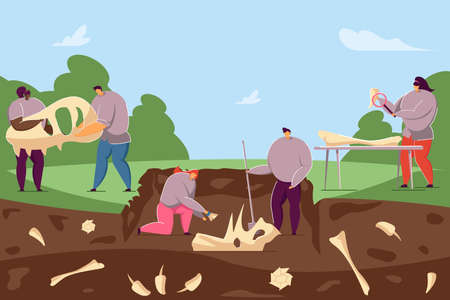Introduction to Wild Camping in the UK
Wild camping across the British Isles is an experience steeped in both tradition and rugged adventure. From the rolling moors of Yorkshire to the dramatic highlands of Scotland, wild camping demands not just a respect for nature, but also a firm understanding of local environments and customs. The UK’s patchwork of landscapes—be it windswept coastal cliffs, ancient woodlands, or remote heathlands—offers unique challenges and opportunities for those seeking to build their own shelter under the open sky. However, before pitching up, campers must navigate a complex legal landscape. In England and Wales, wild camping is largely restricted without landowner permission, while Scotland’s Land Reform Act grants far greater freedoms, provided you adhere to the Scottish Outdoor Access Code. Tradition plays its part too: from the bothies of rural Scotland to the bushcraft shelters favoured by British survivalists, local techniques have evolved alongside the land itself. Understanding these aspects is vital—not only for a successful night outdoors but also for preserving the wild places that make UK camping so special.
Classic British Shelter-Building Techniques
When it comes to wild camping in the UK, understanding the classic shelter-building methods used by generations of outdoorsmen is not just a nod to history—it’s a survival skill deeply rooted in the British landscape. These time-tested techniques blend local materials with practical design, allowing campers to construct robust shelters that withstand the unpredictable British weather. Here’s a detailed look at traditional methods such as lean-tos, debris huts, and the enduring principles behind Scottish bothies.
Lean-Tos: The Quintessential Woodland Shelter
The lean-to is one of the simplest and most effective shelters for British woodlands. Traditionally, a sturdy horizontal pole (ridgepole) is lashed between two trees, with branches or tarps angled down from it to create a sloped roof. This design efficiently sheds rain—a crucial consideration in the UK’s damp climate—and can be quickly assembled using only basic tools. Key features include:
| Component | Traditional Material | Purpose |
|---|---|---|
| Ridgepole | Sturdy branch or sapling | Main support for structure |
| Roof covering | Brash, ferns, heather, or tarp | Sheds water and insulates |
| Side walls (optional) | Logs or brushwood | Wind protection |
Debris Huts: Insulation from the Elements
The debris hut is another classic approach, particularly valued for its insulation properties during colder months. Built by constructing a framework of sticks in an A-frame or tepee shape, this shelter is then piled high with layers of leaves, bracken, or moss. The thick outer layer acts as natural insulation against wind and cold—a vital feature for surviving chilly British nights without modern gear. Traditional tips include gathering enough debris (at least arm’s length deep) and always building off wet ground when possible.
The Bothy Tradition: Communal Shelter in the Highlands
No discussion of UK shelter-building is complete without mentioning the Scottish bothy—a staple of Highland culture. Bothies are simple stone cottages left open for travellers and hillwalkers seeking refuge from harsh conditions. While not strictly ‘built’ by wild campers, bothies embody principles essential to all shelter: communal resourcefulness, respect for nature, and self-reliance. Modern wild campers often emulate these values by leaving makeshift shelters tidy and ready for the next person.
Comparing Traditional Shelter Types
| Shelter Type | Main Advantage | Best Environment |
|---|---|---|
| Lean-to | Quick setup, good rain runoff | Woodland edges, lowland forests |
| Debris Hut | Superior insulation, uses natural materials | Moorland fringes, mixed woods |
| Bothy (stone hut) | Permanent, communal refuge | Scottish Highlands & remote uplands |
Hard-Won Lessons from Tradition
The legacy of British shelter-building teaches us that adaptation to environment—using what’s at hand and respecting local customs—remains at the heart of successful wild camping. Whether you’re fashioning a quick lean-to beneath oaks or seeking out an ancient bothy in windswept glens, these traditional techniques offer proven strategies for staying safe and dry in Britain’s varied wilderness.

3. Modern Materials and Approaches
As wild camping has surged in popularity across the UK, so too have innovations in shelter design and materials. Today’s outdoor enthusiasts are spoilt for choice, with modern gear engineered to tackle the fickle British weather while reducing pack weight and setup time. Among the most popular options is the lightweight tarp—a versatile piece of kit that can be pitched in countless configurations, from simple lean-tos to more elaborate A-frames. These tarps, often made from advanced ripstop nylon or silpoly, offer impressive water resistance and can withstand relentless Highland drizzle or coastal gales.
Bivvy bags represent another leap forward for solo adventurers seeking a minimalist approach. These compact shelters slip over your sleeping bag, providing essential protection from wind and rain without the bulk of a traditional tent. Many bivvy bags now feature breathable membranes such as Gore-Tex, allowing condensation to escape while keeping out the damp—a crucial feature when bedding down on the sodden moors or in misty woodlands.
For those who favour a touch more comfort, contemporary portable shelters have evolved well beyond their canvas ancestors. Modern tents designed for British conditions now boast reinforced poles, storm flaps, and rapid-pitch systems. Low-profile designs help reduce wind resistance on exposed fells, while robust ground sheets shield you from wet grass and boggy soils typical of UK campsites.
When choosing your shelter, it pays to consider not just weight and packability but also how well it copes with Britain’s notorious weather shifts. Innovations like reflective guy lines for night-time visibility, integrated bug nets for midge-prone Scottish glens, and modular add-ons make today’s gear adaptable for everything from a quick Dartmoor bivouac to an extended Lake District trek. In sum, modern materials and approaches give UK wild campers the means to stay dry, safe, and agile—no matter what the skies throw their way.
4. Choosing the Right Site
Picking your shelter spot in the British countryside is a blend of practical know-how and respect for the land. A hasty decision can lead to a miserable night, damaged kit, or even legal trouble. Here’s what every wild camper should weigh up when selecting a safe and discreet site in the UK.
Key Considerations for Site Selection
| Factor | Why It Matters | Best Practice |
|---|---|---|
| Weather Exposure | British weather is notoriously unpredictable; wind and rain can turn a poor location into a hazard. | Seek natural windbreaks (hedgerows, stone walls), avoid valley bottoms prone to cold air pooling or flooding, and steer clear of exposed hilltops. |
| Terrain Stability | Uneven, boggy, or sloped ground affects both comfort and safety. | Look for flat, well-drained ground with minimal risk of water run-off or standing puddles. Avoid animal trails and eroded areas. |
| Discretion | Wild camping is tolerated in some places but illegal in others; visibility increases the chance of disturbance or conflict. | Choose spots out of sight from paths, roads, and private property. Arrive late, leave early, and keep a low profile. |
| Leave No Trace Ethic | The UKs natural beauty relies on responsible campers who minimise their impact. | Select durable surfaces (grass, gravel), never cut live vegetation, pack out all litter, and avoid disturbing wildlife habitats. |
Shelter Orientation & Microclimate Awareness
Once you’ve found a promising patch, consider how you’ll orient your shelter. In the UK, prevailing winds often blow from the southwest—pitch your entrance downwind for comfort. Study nearby features: a copse might offer shelter from rain but could also harbour midges or collect cold damp air at dusk. Always check above for widow-makers—overhanging dead branches are as much a threat here as anywhere else in the world.
Access to Resources vs. Privacy
You’ll want access to fresh water for drinking and cooking, but don’t camp right on riverbanks—these spots are prone to flooding and erosion. Instead, locate your shelter at least 50 metres away from any water source to protect fragile riparian habitats and maintain discretion from dog walkers or farmers passing by.
The Local Perspective
In many parts of Scotland, wild camping is legal under the Land Reform Act, provided you act responsibly. Elsewhere in the UK—England, Wales, Northern Ireland—it’s often technically trespass unless you have permission. Discretion is vital: respect farmland boundaries, close gates behind you, and if challenged by locals or rangers, be polite and ready to move on. The goal is simple: enjoy Britain’s wild spaces without leaving a trace—or drawing unwanted attention.
5. Essential Skills for Shelter Building
Mastering shelter building in the UK’s wild landscapes is not just about gathering materials—it demands a set of hard-earned survival skills honed for the unique British environment. Whether you’re braving the Scottish Highlands or hunkering down in the dense woodlands of Wales, certain techniques are non-negotiable if you want your shelter to last through the night.
Knot-Tying: The Backbone of Shelter Construction
No matter how good your materials, a weak knot spells disaster. British wild campers swear by a few tried-and-true knots: the taut-line hitch for adjustable tension on guy lines, the bowline for strong, secure loops, and the clove hitch for quick anchoring to branches or stakes. Practice these until you can tie them blindfolded—the unpredictable UK weather won’t give you time for fumbling.
Wind-Proofing Your Shelter
The UK is notorious for its blustery conditions, especially across exposed moorland and coastal areas. Always pitch your shelter with its lowest profile facing into the prevailing wind—typically from the southwest. Use natural windbreaks like hedgerows or dry stone walls whenever possible. Reinforce all anchor points with double knots and weigh down edges with rocks or logs to prevent gusts from lifting your structure during the night.
Managing Damp and Wet Conditions
Rain is a constant companion in Britain, so keeping yourself dry is a matter of survival, not comfort. Start by selecting a well-drained site; avoid hollows where water collects. Lay down a thick bed of bracken, dry leaves, or even spare clothing as insulation between you and the sodden ground. If using tarps or ponchos, angle them to channel runoff away from your sleeping area—never underestimate how quickly water can pool beneath you.
Adaptability and Vigilance
The best wild campers don’t just build shelters—they adapt them on the fly. Regularly check knots and anchor points throughout your stay, tightening as needed when conditions change. Keep an eye on the weather; if heavy rain is forecast overnight, consider doubling up waterproof layers or reinforcing drainage channels around your camp.
The Value of Practice
These skills won’t come naturally overnight. Get out there and practise in different conditions—try knotting with cold hands, setting up in high winds, and keeping dry after a downpour. In true hard-nosed British fashion, preparation is everything: respect the land, know your craft, and you’ll sleep soundly whatever the wild throws at you.
6. Safety, Comfort, and Local Wildlife
When wild camping in the UK, your shelter is more than just a roof over your head—it’s your primary defence against exposure and a cornerstone of comfort in unpredictable British weather.
Staying Safe from Exposure
The UK climate can turn on a sixpence, so always choose your site with wind direction and potential rainfall in mind. Position your shelter to shield against prevailing winds—often from the west or southwest. Use natural features like hedgerows or dry stone walls for extra protection but avoid pitching too close to watercourses, which can flood or attract cold air at night. Waterproofing is essential: check seams, use ground sheets, and if you’re using a tarp or bivvy bag, ensure it’s pitched taut to shed rain efficiently.
Keeping Comfortable in the Wild
Comfort starts with what’s under you. Lay down bracken, dry leaves, or a foam mat to insulate from the damp British ground—hypothermia is a real risk even in summer months. Insect repellent and netting can make all the difference during midge season in Scotland or mosquito-prone southern regions. Layer up with moisture-wicking clothing and have a dry change ready for bedtime; it’s a classic trick among British bushcrafters to keep morale high when the temperature drops.
Coexisting with Local Wildlife
The UK countryside teems with life—from curious badgers and foxes to nesting birds and deer. Store food securely in sealed bags and hang it out of reach if possible; this deters both scavengers and livestock in shared pastures. Respect the local ecosystem: never camp directly on animal trails or disturb nests, and always follow the Leave No Trace principles. If you encounter wildlife, observe quietly without feeding or approaching them—a hallmark of responsible wild camping etiquette in Britain.
Final Word
Your shelter is your home base; its location, construction, and maintenance are critical for survival, comfort, and harmony with nature. By taking these safety measures seriously and respecting the land and its inhabitants, you’ll enjoy a true taste of wild Britain—hardy, resilient, and steeped in tradition.


